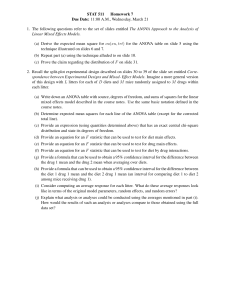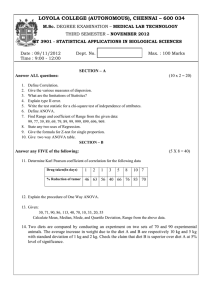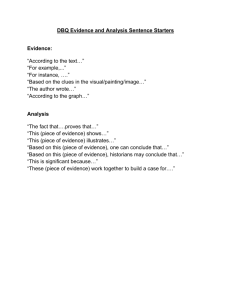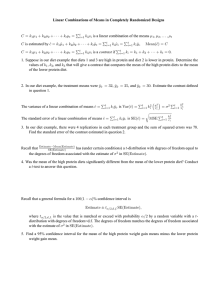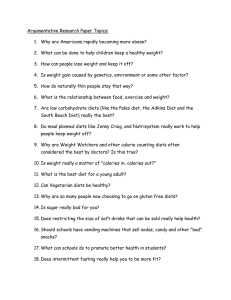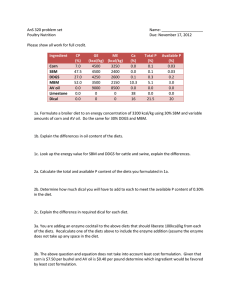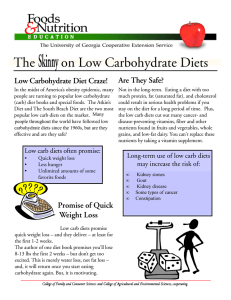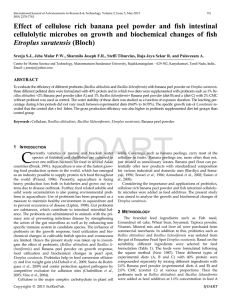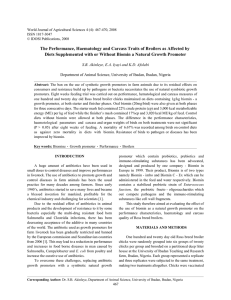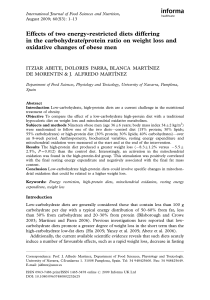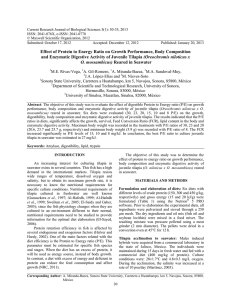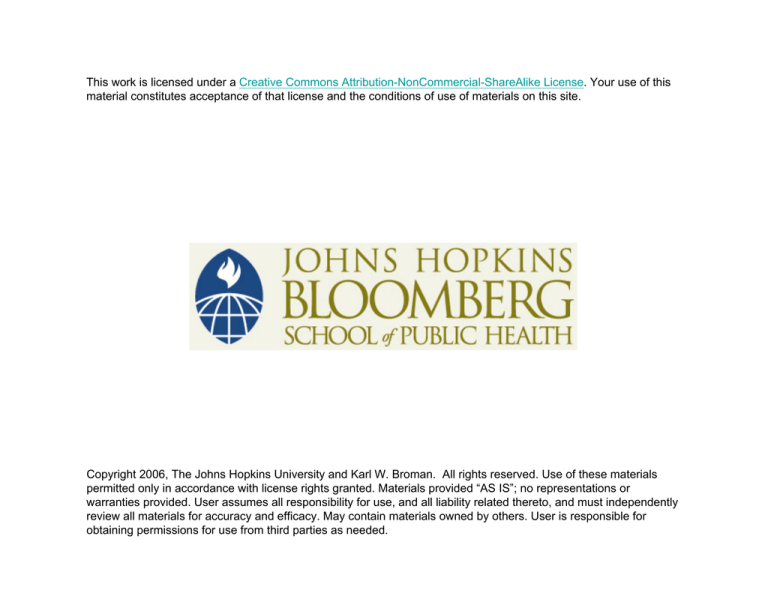
This work is licensed under a Creative Commons Attribution-NonCommercial-ShareAlike License. Your use of this
material constitutes acceptance of that license and the conditions of use of materials on this site.
Copyright 2006, The Johns Hopkins University and Karl W. Broman. All rights reserved. Use of these materials
permitted only in accordance with license rights granted. Materials provided “AS IS”; no representations or
warranties provided. User assumes all responsibility for use, and all liability related thereto, and must independently
review all materials for accuracy and efficacy. May contain materials owned by others. User is responsible for
obtaining permissions for use from third parties as needed.
Statistics for laboratory scientists II
Homework problems for lecture 6
1. Consider the following data on the responses of mice to two
treatments.
Ttt A: 159 190 204 206 222 223
Ttt B: 370 376 418 488 490 503 512 532 587 605 637
2. Assume that these data are independent samples from two
normal distributions.
a. Perform a statistical test of whether the two underlying
populations have the same variance. What do you
conclude?
b. Calculate a 95% confidence interval for the ratio of the
underlying population SDs.
3. Consider the following (fictitious) data on the weight-gain of
lambs on three different diets (from example 11.2 in Samuels
and Witmer, pg 468).
Diet 1 Diet 2 Diet 3
8
9
15
16
16
10
9
21
17
11
6
18
4. A file containing these data is available here: data_hw07-1.csv.
a. Use R to calculate the ANOVA table and test the hypothesis
that the average weight gain for the three diets is the
same.
b. What do you conclude?
5. We consider data on the stem length of daffodils from four sides
of a building and from an open area nearby. (Problem 11.12 in
Samuels and Witmer, pg 482). Here are some summary
statistics:
Area
Ave
SD
n
North 41.4
9.3 13
East
43.8
6.1 13
South 46.5
6.6 13
West 43.2 10.4 13
Open 35.5
4.7 13
6. A file containing the data is available here: data_hw07-2.csv.
a. Plot the data.
b. Use R to calculate the ANOVA table and test the hypothesis
that the average weight gain for the three diets is the
same.
c. What do you conclude?

